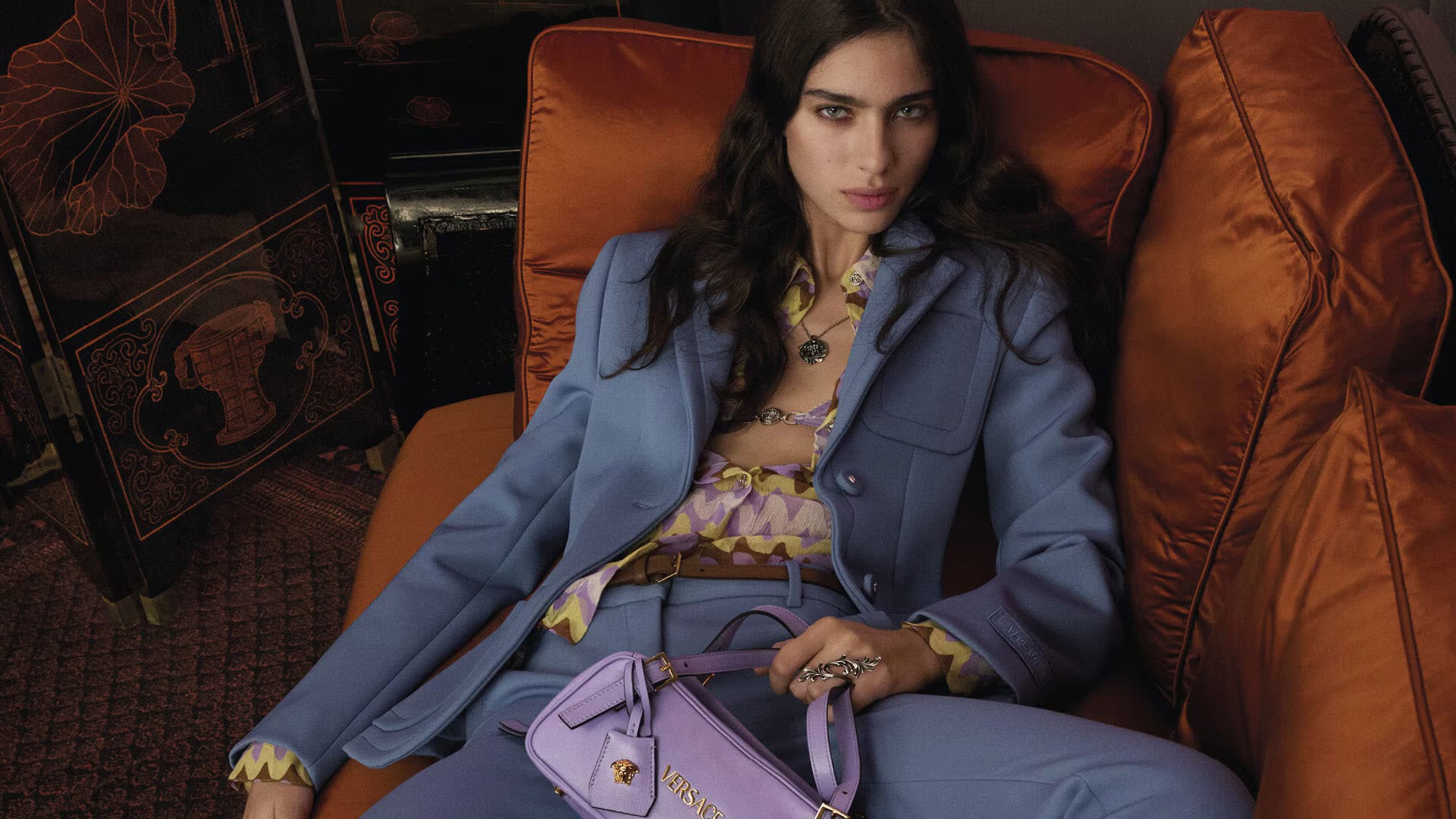NEW YORK — Maybe it was the sludgy, humid air, but the 650 or so attendees at Thursday evening’s Hermès show, on a pier on Manhattan’s southern tip, were on the prowl like jungle cats. “Oooh,” a woman cooed, her voice rich with envy (and, let’s face it, money). “Look at her little one.”
Perspective | Why are Americans mad for Hermès?

The “little one” was a Faubourg Birkin 20 — the smallest and arguably rarest of the house’s globally coveted handbags — which is decorated like the facade of the flagship store. There are cute little leather awnings (in orange, of course) and a tiny shopping bag on the handle. It sells for a precious $30,000, according to Sotheby’s, and has sold for an even more adorable $180,000 on the secondary market.
The observer, one of many invitees whose shopping habits earned her a seat at the show, had the slightly larger Birkin 25 in her own manicured fingers. She inhaled and exhaled deeply, her nerves rattled as if she were in the presence of some famously elusive celebrity, or the most delicious but evasive prey.
The occasion of the big hunt was an Hermès women’s show — its first new collection to debut outside Paris — staged as a second chapter of its Fall 2024 collection shown in the French fashion capital in March.
“Why New York?” Nadège Vanhée, Hermès’s artistic director of women’s ready-to-wear, mused shortly beforehand. She was wearing a shrunken T-shirt with tight leather pants and scrunchy ankle boots (all Hermès). Her curly red hair was slicked back and tucked behind her ears. “The collection really reflects a spirit of New York,” she said. Vanhée was the designer for the Row, Mary-Kate and Ashley Olsen’s quirky luxury label, before coming to Hermès, and “I developed an aesthetic sensibility by living in the city.”
And, well, because Americans love Hermès.
“The American consumer is getting that sophistication and warming up to some of the more out-there pieces,” said Zachary Kowall, speaking by phone this week. Cuffs, his family boutique in Chagrin Falls, Ohio, has carried the line since the late 1980s. (Cuffs is the only wholesale account in the world, and the only Hermès outpost in the Buckeye State.) Whereas other businesses might position their creative director as a star — “it’s more about the designer, or the rapper,” Kowall said, presumably taking a swipe at Louis Vuitton’s menswear designer, Pharrell Williams — Hermès centers its designs. “There’s an eccentricity to all of it,” he said.
These days, so many designer goods run together: one global haze of $2,000 straw market baskets, $3,000 cardigan jackets and $1,500 ankle boots. Shopping for luxury items usually means choosing which logo you want to wear, which may be one reason the industry has hit a slowdown.
But Hermès, its fans say, stands apart. Its sales climbed 17 percent in the first quarter of this year. Sure, it makes the most recognizable handbags in the world, the Birkin and the Kelly, and for some people, shopping there is a 3D chess game of it-bag acquisition, as it’s widely believed a shopper must buy a broad swath of Hermès products before being offered the chance to buy a handbag. A subreddit called “TheHermesGame” exists for customers — excuse me, clients — to swap tips on how they snagged their desired bags with rabid intensity. These are people for whom shopping is a full-contact sport. (A recent Google review for the store in D.C.’s Palmer Alley reads: “Nice. Spent over $10,000 just now.”) Hermès is so in demand that two people in California have filed a lawsuit accusing the house of not letting them buy a Birkin. Imagine being so desperate to get a purse that you’re driven to sue.
Somehow, that corniness does not dilute the name. “Seeing a girl with an Hermès scarf tied around the handle of a cheap bag doesn’t make anyone want the perfect Kelly any less,” said Chris Black, a co-host of the podcast “How Long Gone” and a sort of anthropologist of cool. “Plus, we all love horse girls.”
What drives this mania? This year, the business podcast “Acquired” released a more than four-hour-long episode on Hermès, in which hosts Ben Gilbert and David Rosenthal breathlessly fawned over the Hermès universe, with its “métiers” that make porcelain, furniture, neckties and saddles; its Grace Kelly and Queen Elizabeth II associations; and its delightful mythology. (They say the house allegedly launched clothing, a little over 100 years ago and nearly a century after its founding as a maker of equestrian equipment in the 1830s, because a customer said they were tired of their horse being better dressed than them.) They attributed its endurance and allure to its sense of whimsy, even a quirkiness. In the world’s most self-serious industry, Hermès dares to laugh.
When asked to describe the Hermès sense of humor, Vanhée gave a typically French answer: It is an essence so specific it’s hard to put into words. “Witty,” she said. “Friendly. Slightly, ah, how can I say?” She tried to find the words in French. “You have this sense of magic, or wonder.”
A certain je ne sais ha, if you will.
“There are some characters and [a] vulnerability that are expressed,” she said.
Characters like Pepé Le Pew? The show opened with a clip from A Tribe Called Quest’s “Luck of Lucien,” a tribute to French rapper Lucien Revolucien, in which he tries to pick up a woman: “It’s a French accent! You know, I’m French, I’m from Paris. Don’t you think it’s sexy?!”
It sounds high-hat, but what Vanhée, who this year marks a decade at Hermès, is able to do with her clothes — or maybe, more accurately, with Hermès — is to say that having a sense of individuality is the purest luxury. That in wearing her clothes, you can be a person, instead of a brand. And isn’t that true, in our world where everything looks more and more the same? Nearly every model wore a sexy little police hat — the most impossibly silly hat in hat history — and leather, the most luxurious durable material in the world and, of course, the source of Hermès’s most recognizable products, in funky, freaky ways. It was like your crazy French friend telling you anything can be a belt: scarves, necklaces, a quilted coat tied around the waist as a skirt. Oooookay!
A blanket, similar to those slung over horses after a race called the Rocabar, was cinched over leather coveralls. A Kelly bag was slung around the waist as a fanny pack. (Imagine pulling your ticket out of that at a theme park!)
The character we saw on the runway was a weird woman. Someone working out her dreams and insecurities and new ideas through getting dressed, someone who’s less interested in appearing perfect than appearing determinedly like herself, even if it looks a little wacky. She — both the woman Vanhée is offering in her collection and Vanhée herself — is taking the trusted status symbols of a company and mixing them up with a fearless guffaw. It’s pretty risqué!
“Beauty is fundamental to everything I do,” Vanhée said. “What I do has to evoke beauty. And what is beauty for me is a feeling of warmth. A smile has to be on your face.”
A man in a green scarf-print jacket, unzipped to reveal a bit of bare chest and a gold necklace, put the Hermès appeal more bluntly: “It’s f—ing quality.”
Related
Trudeau says Canada will issue 25% tariffs on $155B of…
'The Bottom Line' panelists Lee Carter and Liz Peek give their take on President Donald Trump confirming the 25% tariffs. Canadian Prime Minister Justin T
Cartel Violence Kills American Citizen In Brutal Fashion. Will Trump…
PublishedFebruary 25, 2025 4:34 PM EST|UpdatedFebruary 25, 2025 4:35 PM ESTFacebookTwitterEmailCopy LinkAn American citizen is dead after a cartel-linked bombin
Luxury Briefing: Tapestry, Capri and the American fashion portfolio shakeup
In this week’s Luxury Briefing: The fallout from the failed Tapestry-Capri merger continues, with Tapestry selling Stuart Weitzman and Capri reportedly eyeing
Liz Truss tells CPAC UK is ‘failing’ and needs Maga-style…
Liz Truss, the former British prime minister, told a rightwing conference in the US that her country was “failing” and needed a Donald Trump-style “Maga�













